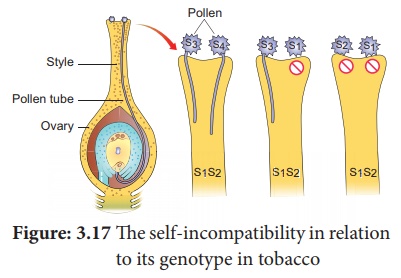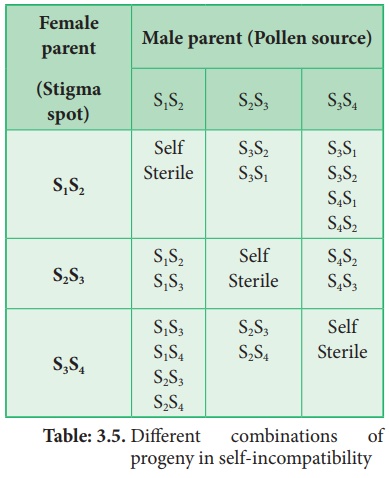Characteristics, Self-sterility - Botany : Chromosomal Basis of Inheritance - Multiple alleles | 12th Botany : Chapter 3 : Chromosomal Basis of Inheritance
Chapter: 12th Botany : Chapter 3 : Chromosomal Basis of Inheritance
Multiple alleles
Multiple
alleles
A given phenotypic trait
of an individual depends on a single pair of genes, each of which occupies a
specific position called the locus on homologous chromosome. When any of the
three or more allelic forms of a gene occupy the same locus in a given pair of
homologous chromosomes, they are said to be called multiple alleles.
1. Characteristics of multiple alleles
·
Multiple alleles of a series always occupy the same locus in the
homologous chromosome. Therefore, no crossing over occurs within the alleles of
a series.
·
Multiple alleles are always responsible for the same character.
·
The wild type alleles of a series exhibit dominant character
whereas mutant type will influence dominance or an intermediate phenotypic
effect.
·
When any two of the mutant multiple alleles are crossed the
phenotype is always mutant type and not the wild type
2. Self-sterility in Nicotiana
In plants, multiple
alleles have been reported in association with self-sterility or
self-incompatibility. Self-sterility means that the pollen from a plant is
unable to germinate on its own stigma and will not be able to bring about
fertilization in the ovules of the same plant. East (1925) observed
multiple alleles in Nicotiana which are responsible for
self-incompatibility or self-sterility. The gene for self-incompatibility can
be designated as S, which has allelic series S1, S2, S3,
S4 and S5 (Figure 3.17).

The cross-fertilizing
tobacco plants were not always homozygous as S1S1 or S2S2,
but all plants were heterozygous as S1S2, S3S4,
S5S6. When crosses were made between different S1S2
plants, the pollen tube did not develop normally. But effective pollen tube
development was observed when crossing was made with other than S1S2
for example S3S4.

When crosses were made
between seed parents with S1S2 and pollen parents with S2S3,
two kinds of pollen tubes were distinguished. Pollen grains carrying S2
were not effective, but the pollen grains carrying S3 were capable
of fertilization. Thus, from the cross S1S2XS3S4,
all the pollens were effective and four kinds of progeny resulted: S1S3,
S1S4, S2S3 and S2S4.
Some combinations are showed in the table-3.5.
Related Topics